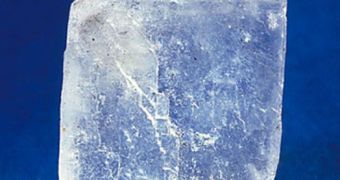The limit of diffraction that most crystal types employ has been for a long time a very difficult obstacle in the path of scientists trying to take a closer look at the atomic structure of these materials. Now, experts at the University of Illinois have managed to achieve a breakthrough in the field, by devising a method of analyzing crystals that is able to move past this limit, and offer eager researchers the much sought-after insight into how these minerals are made up on the inside.
Quantum dots are a class of nanocrystals, and are made up of small assemblages of atoms, whose structures need to be deciphered both optically and electronically. This means that while the number of electrons inside these atoms can be mathematically established, the researchers also need to know the exact position of the atoms, relative to each other, so that the count may be considered accurate. And this is where, until now, the diffraction limit set in.
Basically, what UI experts have done in order to get past this obstacle has been to combine two sets of images captured by the same electron microscope. One is the optic one, and the other is a composite image, which records the diffraction patterns of each quantum dot. This has allowed the investigators to obtain sub-angstrom resolutions for structures, to a level of detail that was impossible before.
“We show that for cadmium-sulfide nanocrystals, the improved image resolution allows a determination of their atomic structures,” UI materials science and engineering professor Jian-Min Zuo, who is also the corresponding author of the new research that has been published in the February issue of the journal Nature Physics, explains.
“The low-resolution image provides the starting point by supplying missing information in the central beam and supplying essential marks for aligning the diffraction pattern. Our phase-retrieval algorithm then reconstructs the image,” the expert, who is also a UI Frederick Seitz Materials Research Laboratory researcher, adds. “We chose cadmium-sulfide quantum dots because of their size-dependent optical and electronic properties, and the importance of atomic structure on these properties. Cadmium-sulfide quantum dots have potential applications in solar energy conversion and in medical imaging.”
“Since low-resolution images can be obtained from different sources, our technique is general and can be applied to non-periodic structures, such as interfaces and local defects. Our technique also provides a basis for imaging the three-dimensional structure of single nanoparticles,” the researcher concludes.

 14 DAY TRIAL //
14 DAY TRIAL //